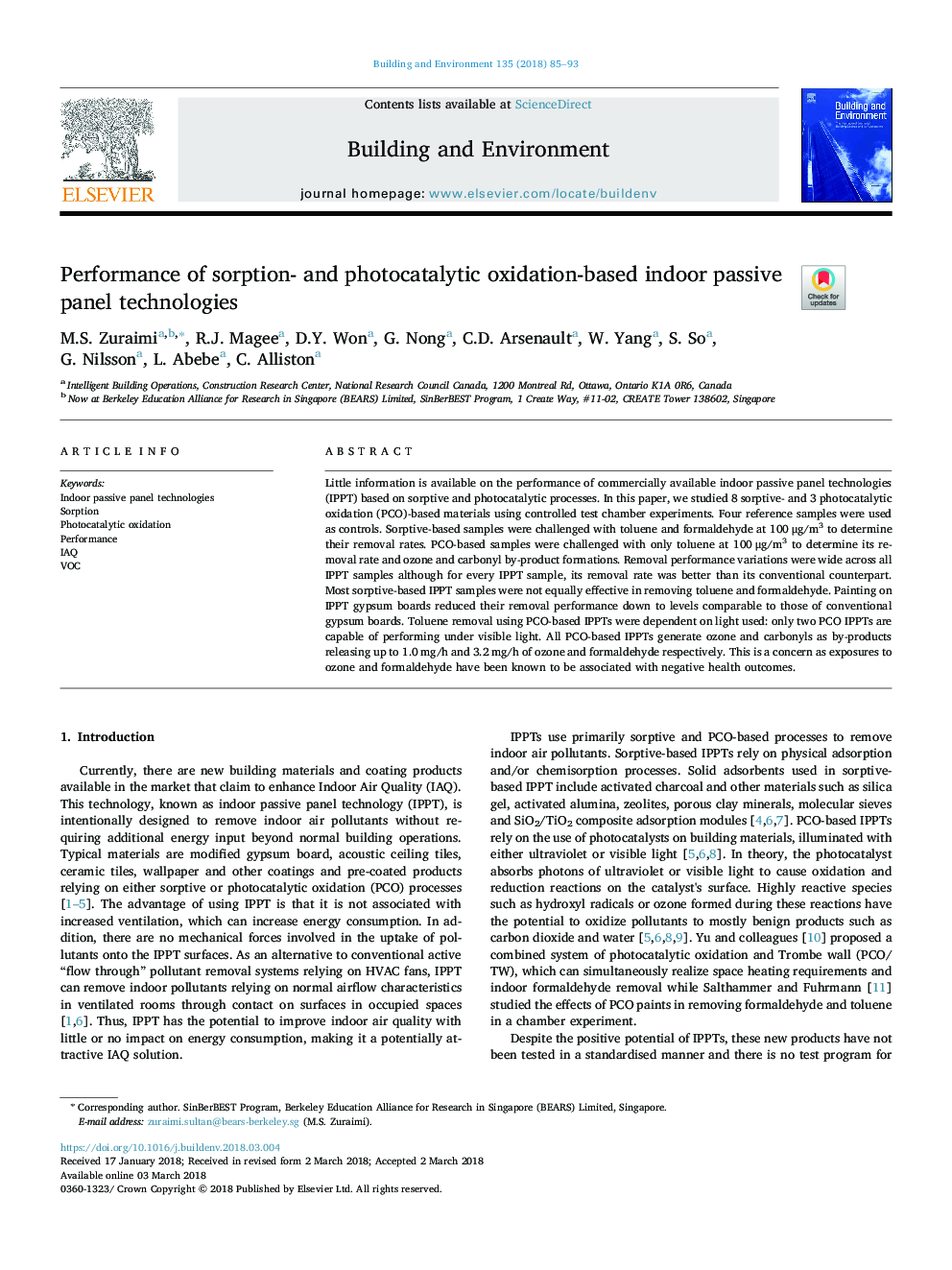| Article ID | Journal | Published Year | Pages | File Type |
|---|---|---|---|---|
| 6697620 | Building and Environment | 2018 | 9 Pages |
Abstract
Little information is available on the performance of commercially available indoor passive panel technologies (IPPT) based on sorptive and photocatalytic processes. In this paper, we studied 8 sorptive- and 3 photocatalytic oxidation (PCO)-based materials using controlled test chamber experiments. Four reference samples were used as controls. Sorptive-based samples were challenged with toluene and formaldehyde at 100â¯Î¼g/m3 to determine their removal rates. PCO-based samples were challenged with only toluene at 100â¯Î¼g/m3 to determine its removal rate and ozone and carbonyl by-product formations. Removal performance variations were wide across all IPPT samples although for every IPPT sample, its removal rate was better than its conventional counterpart. Most sorptive-based IPPT samples were not equally effective in removing toluene and formaldehyde. Painting on IPPT gypsum boards reduced their removal performance down to levels comparable to those of conventional gypsum boards. Toluene removal using PCO-based IPPTs were dependent on light used: only two PCO IPPTs are capable of performing under visible light. All PCO-based IPPTs generate ozone and carbonyls as by-products releasing up to 1.0â¯mg/h and 3.2â¯mg/h of ozone and formaldehyde respectively. This is a concern as exposures to ozone and formaldehyde have been known to be associated with negative health outcomes.
Related Topics
Physical Sciences and Engineering
Energy
Renewable Energy, Sustainability and the Environment
Authors
M.S. Zuraimi, R.J. Magee, D.Y. Won, G. Nong, C.D. Arsenault, W. Yang, S. So, G. Nilsson, L. Abebe, C. Alliston,
